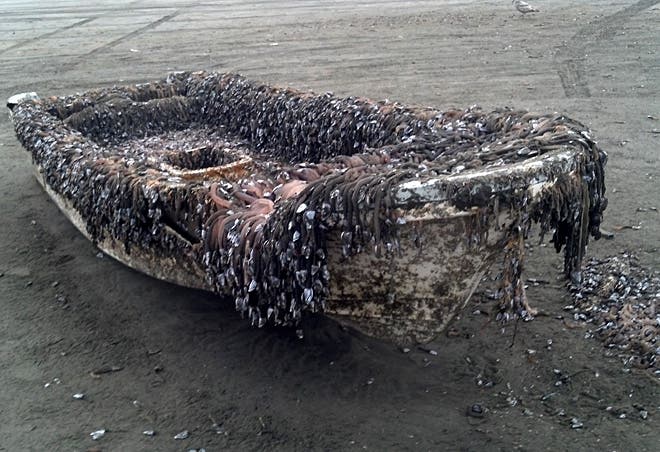Barnacles’ ability to cling to wet and slimy surfaces could end up being a boon to medicine. A group of MIT researchers have developed a medical paste made of adhesive proteins that can seal injured tissues and stop bleeding in just a few seconds.

Barnacles have a habit of sticking themselves to stuff. Normally, this can cause quite a nuisance, but in this case, it could come in handy.
“We are solving an adhesion problem in a challenging environment, which is this wet, dynamic environment of human tissues. At the same time, we are trying to translate this fundamental knowledge into real products that can save lives,” Xuanhe Zhao, one of the senior authors of the study and an MIT researcher, said in a statement.
Tissue and organ-related hemorrhages can be life-threatening and are challenging to treat owing, especially due to the often complex nature of the injury (and the extreme time pressure they come with). Uncontrolled hemorrhages are one of the major causes of mortality in the world, accounting for more than two million deaths annually, previous studies have shown.
Sutures are commonly used to seal wounds, but putting stitches in place is a time-consuming process that usually isn’t possible for first responders to perform during an emergency situation. Among the military, blood loss is the leading cause of death after a traumatic injury, and among the general population, is the second leading cause.
Some materials that can stop bleeding, called hemostatic agents, have become commercially available in recent years. Many consist of patches that have clotting factors, which help the blood to clot on its own. However, the patches need several minutes to form a seal and don’t always work on wounds that are bleeding a lot.
This is where barnacles (Cirripedia) enter. As well as other marine invertebrates, they have a remarkable capacity of forming strong adhesion on wet surfaces, from man-made structures to animal skins. Glues of barnacle first clean the surface, repelling all the water and contaminants, and then forms a stable and strong adhesion to it — exactly what you want if you’re trying to deal with a hemorrhage.
“To seal bleeding tissues, you have to fight with not only wetness but also the contamination from this outcoming blood. We found that this creature living in a marine environment is doing exactly the same thing that we have to do to deal with complicated bleeding issues,” MIT researcher Hyunwoo Yuk said in a statement.
Looking at barnacles

The researchers tried to mimic the glue by adapting and adhesive they had previously created. The material consists of a polymer embedded with an organic compound, which provides adhesion, and chitosan, a sugar that strengthens the material. For the study, they froze sheets of this material, grounded it into microparticles, and then suspended these in silicone oil.
When the resulting paste is applied to a wet surface (such as a blood-covered tissue) the oil repels the blood and other substances that might be present, allowing the microparticles to form a seal over the wound. The bleeding stops in just 15 to 30 seconds after applying the glue with gentle pressure, the researchers showed in test rats.
The material can be bolded to fit irregular wounds, which gives freedom to the users to adapt it to wounds of all kinds, the researchers said. In tests in pigs, they found the glue was able to rapidly stop bleeding in the liver, working much faster and more effectively than the commercially available hemostatic agents they compared it to in the study.
The findings also showed that the seal remains intact for several weeks, giving the tissue below time to heal itself. The glue induced little inflammation, similar to that produced by currently used hemostatic agents, and is slowly resorbed with the body over months. It can also be removed earlier by applying a solution that dissolves it.
For their next step, the researchers hope to test the glue on larger wounds. This should help to demonstrate that the glue would be useful to treat traumatic injuries, they argue. The glue could even be useful during surgical procedures, as they often require surgeons to spend a great deal of time controlling bleeding, the researchers said.
The study was published in the journal Nature.



